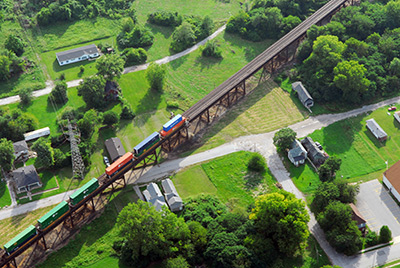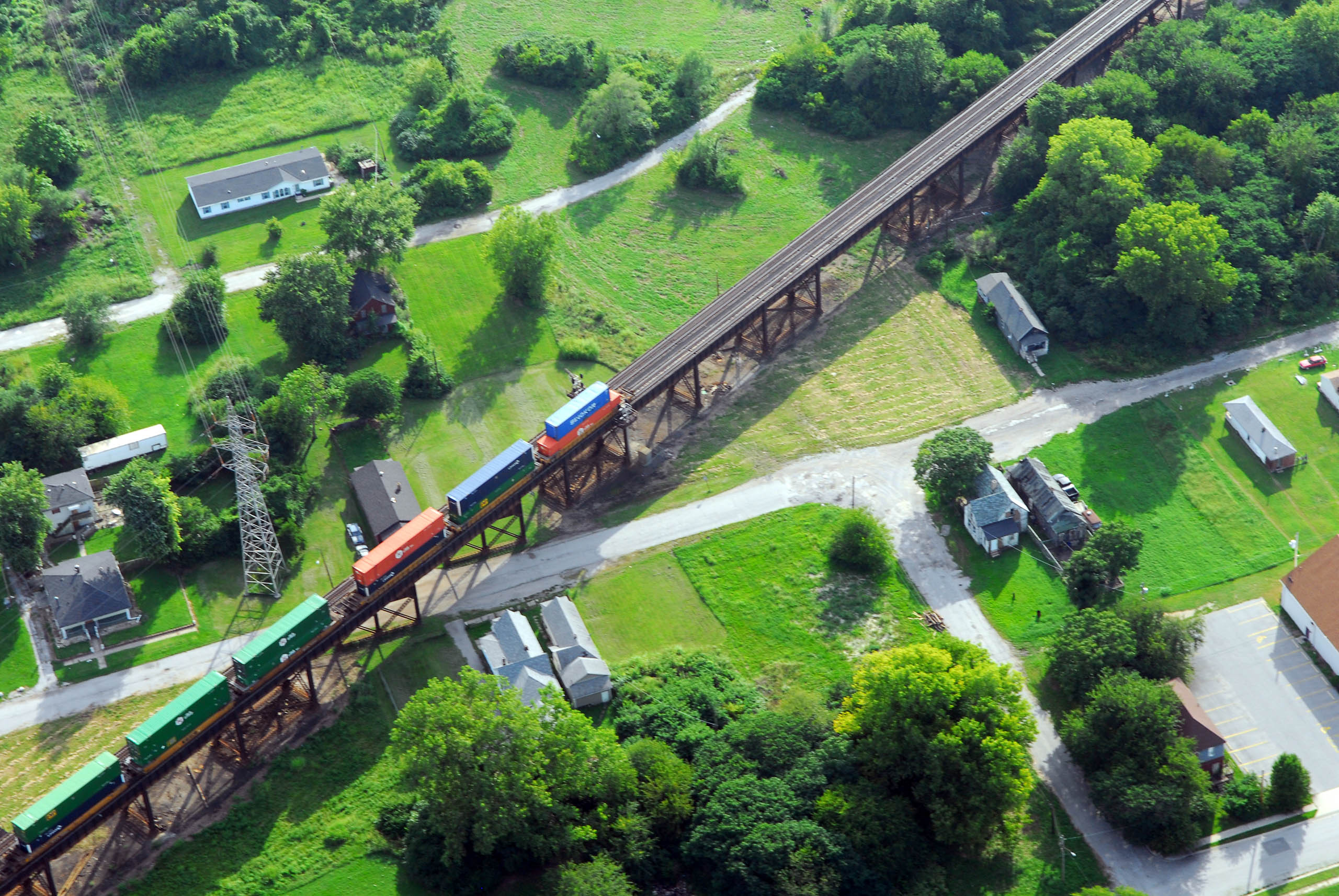



The sprawling Alton and Southern Gateway yards mark the southern end of the East St. Louis industrial corridor that includes the villages of Alorton and Centerville. The yards were conceived in the early 1960’s by the Aluminum Ore Company (now Alcoa) as part of a larger regional expansion to convert their already large rail holdings into a major terminal railroad to compete with other local interests. As early as 1910, the Aluminum Ore Company of East St. Louis began a 50-year investment in regional rail infrastructure that could provide more direct service to their plant without the need to lease or pay fees for connections across other lines. But the completion of the hump and Gateway yards coincided with the closure of the Alcoa East St. Louis plant, and the yards were put up for sale in 1966. The Gateway hump yards are part of a broader rail infrastructure known as classification yards. Here, trains are sorted, decoupled, and recoupled into new train configurations. The ‘hump’ refers to a discrete rise at one end of the yards, over which single cars are pushed and then roll by gravity to their destination tracks in the sorting bowl. In addition to this sorting function, the Gateway yards provide a long, sloping incline to/from the Merchant Bridge that crosses the Mississippi to its west. This incline gradually rises above the yards themselves as it marches across neighborhoods and houses in its approach to the river.